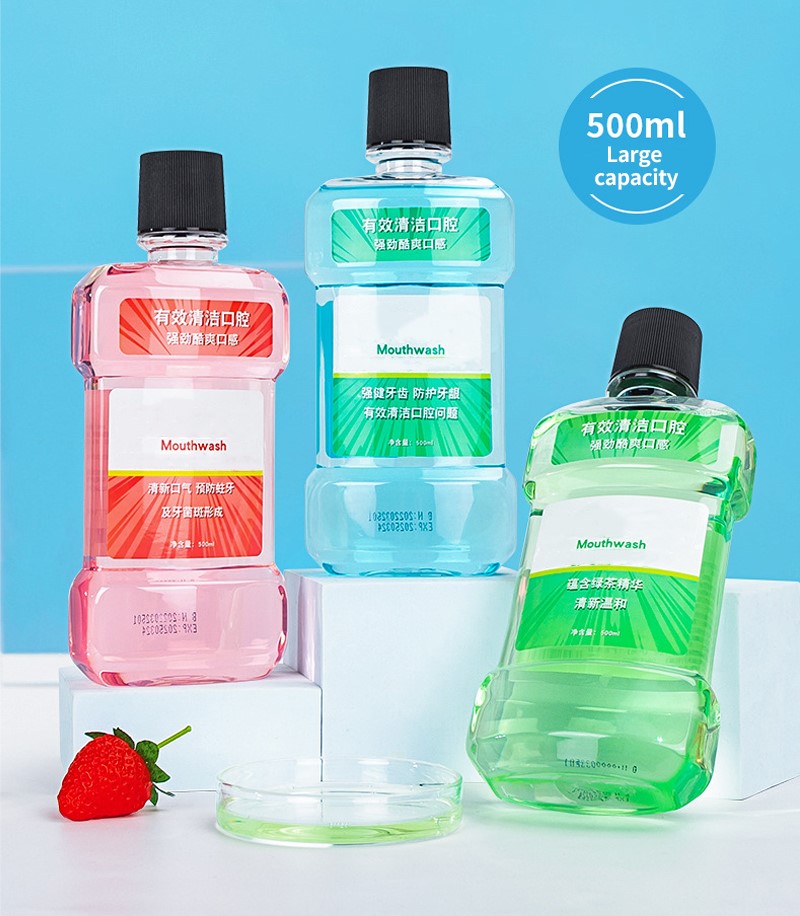Mouthwash is an effective addition to brushing and flossing, helping in the maintenance of a clean and healthy mouth.
It is a widely used oral hygiene product that becomes a staple in many people’s daily oral care routines. You’ll get the most benefit of mouthwash if you use it correctly. In this article, we will explore what mouthwash is, how it works, and the proper way to use it to maximize its benefits.
What is Mouthwash?
Mouthwash, also known as an oral rinse or mouth rinse, is a vital part of oral hygiene care products that complement regular brushing and flossing. It comes in various types, including antiseptic, fluoride, and therapeutic mouthwashes. Each of them serves a unique purpose, targeting different oral concerns.
Mouthwash helps to freshen your breath, so it does not replace or stop you from regular twice-daily tooth brushing and daily flossing. Others, such as fluoride rinse, help protect teeth against acids produced by plaque bacteria if you use them after you have thoroughly brushed and flossed your teeth. While some help in treating gum diseases.
How Does Mouthwash Work?
There are different types of mouthwash. This clearly shows that mouthwash varies and the work depends on the type. For mouthwash to work for you, you have to choose a mouthwash formulated to help you with your oral care needs. If you’re buying mouthwash for bad breath, a cosmetic mouthwash with a flavour will be the best for you but If you want to fight off bacteria, look for a mouthwash that has antiplaque, antigingivitis, antibacterial or antimicrobial written on its body.
Another thing to note while choosing mouthwash is that adult mouthwash differs from children’s mouthwash. Talk to your manufacturer about what you need or your dentist or dental hygienist for recommendations.
Mouthwash works its magic through several key mechanisms:
1: Killing Harmful Bacteria: One of the primary roles of mouthwash is to combat bacteria in the mouth. These bacteria can lead to bad breath, plaque buildup, and various oral health issues. Mouthwash contains antimicrobial agents that help reduce the number of harmful bacteria, promoting a healthier oral environment.
2: Reducing Plaque and Gingivitis: Plaque, that sticky film that forms on our teeth, can eventually lead to gingivitis, an early stage of gum disease. Mouthwash with anti-plaque ingredients can help prevent and reduce the accumulation of plaque, protecting your gums from inflammation and potential infection.
3: Freshening Breath: The dreaded dragon breath can be embarrassing and a real mood killer. Mouthwash’s ability to freshen breath is one of its most appealing features. It neutralizes odour-causing compounds in the mouth, leaving your breath minty-fresh and confident.
4: Reaching Areas Brushing Misses: While brushing and flossing are essential, they may not always reach every nook and cranny in your mouth. Mouthwash can get to those tricky areas, ensuring a more thorough clean.
How to Use Mouthwash Effectively
You should know that using Mouthwash doesn’t replace or stop you from brushing and flossing your teeth. Mouthwash, brushing and flossing don’t do the same work in our mouth, So to get the most out of your mouthwash, follow these simple steps:
1: Pick the Right Mouthwash: There are various types of mouthwash available, each with different benefits. Some focus on reducing plaque, while others prioritize fresh breath. Choose a mouthwash that suits your specific needs and consult your dentist if you’re unsure.
2: Measure the Right Amount: Check the product label for the recommended dosage. Usually, a half-filled cup is sufficient. Avoid using more than the recommended amount, as excessive use can lead to oral irritation.
3: Timing is Key: The best time to use mouthwash is after brushing and flossing your teeth. This way, you’ll maximize its effects, reaching areas your toothbrush and floss might have missed.
4: Swish and Gargle: Pour the measured mouthwash into your mouth and swish it around for 30 seconds to 1 minute. Gargle at the end to reach the back of your throat for additional freshness.
5: Spit It Out: Once you’re done swishing and gargling, spit the mouthwash into the sink. Avoid swallowing the liquid, as it may contain bacteria and chemicals that are not meant to be ingested.
6: Avoid Eating or Drinking Immediately: Refrain from eating or drinking for at least 30 minutes after using mouthwash. This allows the active ingredients to continue working effectively.
7: Consult Your Dentist: If you have specific dental concerns or conditions, such as sensitive teeth or dry mouth, consult your dentist before choosing a mouthwash. They can recommend the most suitable type for your needs.
Mouthwash is a fantastic addition to your oral care routine, providing a host of benefits to keep your smile healthy and fresh. By understanding how mouthwash works and using it correctly, you can enjoy its full potential. Remember to consult your dentist regularly, as they can provide personalised advice on which mouthwash is best for you. So, keep swishing, gargling, and smiling your way to excellent oral health! Contact Ekong Smile today for a mouthwash that meets your needs.

